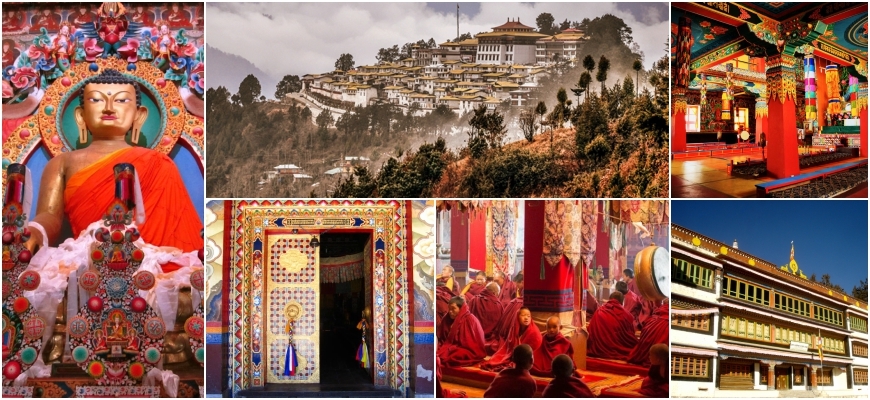Indulge your soul in peace and serene ambience of world’s second largest ‘Tawang Monastery’ in Arunachal Pradesh
Itanagar, October 10: Thinking about a peaceful escape in the arms of extraordinary beauty- where soul gets it food making it happy? Tawang Monastery offers to serve the bliss. Tawang Monastery or Tawang Gompa is India’s largest and Asia’s second largest monastery. Situated on a mountain in the town of Tawang at an altitude of over 3000 m, Tawang Monastery is one of the most important Buddhist sites in the world.

Also known as the 'Galden Namgyal Lhatse', the Tawang monastery was established by Merak Lama Lodre Gyamtso in the year 1860-61. The Tawang monastery, standing as high as 10,000 feet above the sea level amidst the picturesque Himalayan ranges sloping towards the east, offers a panoramic view of the Tawang-Chu valley. The monastery has actual capacity of housing 700 monks, is the main centre of spirituality and religion for the people residing in and around Tawang.
In Tibetan, ‘Ta’ means horse and ‘wang’ means “chosen”, hence the name Tawang – chosen by a horse. The full name of the monastery is Tawang Galdan Namgye Lhatse – “The site chosen by the horse is the divine celestial paradise”.
Buddhist Monastery outside of Lhasa. Within the complex, the most prominent building is the 3 storey high monastery with a spacious compound. It has a giant statute of Buddha. Around this monastery there are around 65-70 residential buildings with uniform yellow roofs. There’s also a library, a museum, a prayer room and other rooms for special purposes.
The most significant building in the compound is Dukhang, the assembly hall. The primary feature of the hall is the 18 feet tall gilded statue of Buddha seated in the lotus position. It is so large that the top of the statue extends to the upper floor. There is also a thangka, a Tibetan Buddhist style painting, of Palden Lhamo, guardian deity of the monastery. It was donated by the 5th Dalai Lama. The entire hall is decorated with exquisite carvings, murals, and paintings in the traditional architectural style of Buddhism.
The Buddhist revered this place. Built in the 17th century, it is the centre of Gelupa School and has connections with Drepung Monastery in Lhasa. This deep connection with Lhasa is also the biggest reason for China’s incessant claim to Tawang. The Museum inside the Monastery can be visited by paying a minimal fee of Rs.10. This one room museum exhibits ornaments, masks, statue of Buddha dating back to 10th century, skull of a great commander of an army named Kher Gyatso, scripture text handwritten from 17th century, a trumpet made of hollow thigh bones and many other important artifacts. Some of these were brought from Tibet during the period of Tibetan exile.
The monastery was also occupied by China during the 1962 Indo-China War, though they caused no harm. Prior to that, the current and 14th Dalai Lama took shelter in the monastery in 1959, when he fled Tibet after a failed rebellion against the government of China.